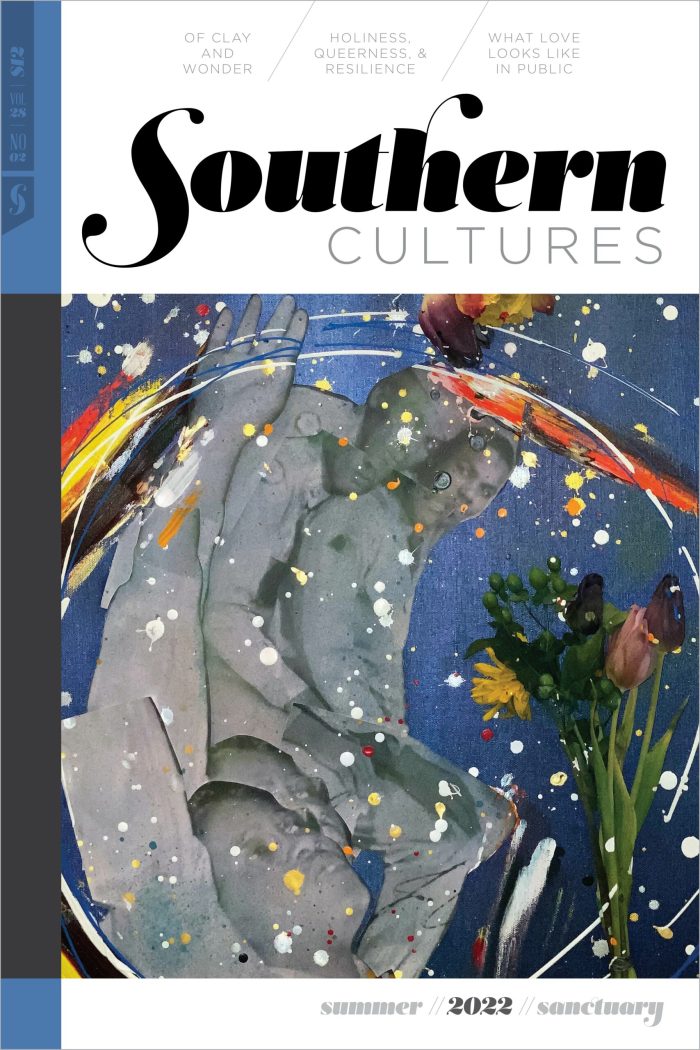My family’s garden is a crazy quilt of vegetables scattered across a strip of land next to the blue house that my grandparents built for themselves sometime in the 1950s. I have vivid memories of our garden while growing up—of my Granddaddy wrangling a rototiller, of following my dad through the rows we made as we trailed in its wake, and of measuring my feet against the impressions left by his, intimidated by how small I felt as I mimicked his gait. In 2020, it bore witness to the callousness of my family’s ambition.
At the front end of a global pandemic, I left my shoebox apartment and Atlanta’s spiking infection rates to make the trek up I-75 to my family’s corner of northeast Tennessee. I argued that I made this decision for the sake of my own health, which, if I’m honest, had less to do with infection rates and more to do with the fact that I get antsy without mountains in my line of sight. It was unseasonably warm at home, windows-open-even-at-night kind of warm, and we got cocky planting rows of corn and beans and squash and okra. We knew what the warm dirt was capable of. My dad grew up eating pots of beans from its rows as did I, in turn, developing just as healthy an admiration for what my Momaw could do with what we brought in (complimented by a generous dash of allspice). But that year, we wanted a little too much too soon. Two weeks after we left the rows to do their work, there was frost.
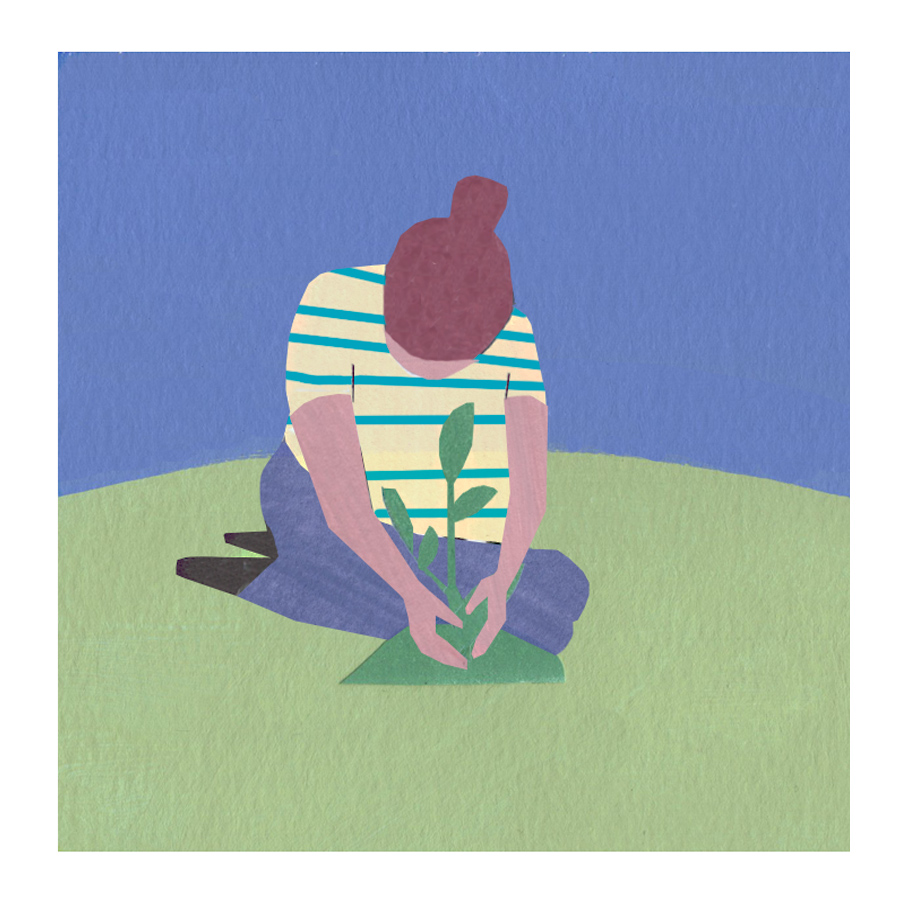
In Uneven Ground, Ron Eller’s authoritative tome on Appalachian history since 1945, he argues that “growth has become central to the American idea of development.” That sentence rang in my ears the first time I read it. I was an undergraduate discovering the world of Appalachian regional history. Now, looking back on that phrase as a graduate student of American History who is still beholden to the mountains, it doesn’t surprise me that, even from my first reading of Eller’s work, I had a hunch where his argument was headed: a warranted and critical exploration of the evils of extractive capitalism and impatient industrialization in a region awash in internal resources and externally enforced assumptions about things like “hillbilly culture” and “mountain religion.”
As the episode in my family’s garden suggests, there are moments when I fall back on the prioritization of profit and efficiency that leaves no room for a shelf of canned beans or complicated histories of place. Because in the valleys and hills and peaks of southern Appalachia, history has demonstrated that efforts toward “growth” and “development” often do not produce what those ideals of American culture and capitalism so desperately want them to mean.1
It is worth noting that, at this juncture, this essay could veer into the territory of the mythic, white, holy Appalachian and his (or her) family, separated from linear time, social mores, normative religious traditions, and a free market. The path that leads to that myth is too well-trod to be true. Because Appalachia—the nuts and bolts and dirt and vines of the place—is more than one story. It is a place where, as Eller writes, even while some of its residents have borne the weight of poverty and social isolation, “leaders from within Appalachia were among the first to call for government intervention programs to promote development and reduce poverty.” By recognizing that the poverty programs unleashed on the mountains were promoted by individuals who called them home, Eller demonstrates that people who identify with Appalachia and hope only the best for its land and citizenry “have engaged in some of the most callous exploitation of the land and of their fellow citizens that has befallen the region.” When it comes to the region we love, any exploitation, or forced hope, or misplaced bureaucratic branding, including poverty programs, is bound not just to people, but to a place where “callous exploitation” of the land is inextricably connected to the exploitation of its citizens. That exploitation is as native as rhododendron and mountain laurel. In Appalachia, legacies of mutual aid coexist alongside the dark history of colonizing settlers and violent conflict with the land’s first and rightful stewards. And it is a place more tragic and joyful than any economic theory or reductive agrarian anecdote can hope to contain.2
I did not come to lean into the ambiguity of my homeplace and its people until I ventured out of it. I did not grasp my emotional dependency on the smell of spring in a very particular corner of the Cherokee National Forest until I found myself hiking elsewhere. It was the summer after my first year of college, and I was roaming around a reservoir with two friends on our day off from the summer camp where we worked. With high school fresh on our minds, we shared stories. They shared about their people. My stories started with place. I could not conceive of beginning the definition of myself without grounding it in the dirt where my great grandmother tended tomato plants. While my friends walked on in front of me, I remember feeling envious of the seemingly uncomplicated air within which their childhoods took place. I also felt inexplicably proud of my people, who were shaped by the particularities of geography. At nineteen, I could not begin to articulate the source of that envy or self-important pride, and, at twenty-nine, I remain wary of it.
In an essay that analyzes and pays homage to the Andy Griffith Show’s rock-throwing, trope-fulfilling mountain man, Ernest T. Bass, author Jeremy B. Jones encounters a similar tension. “I never once considered myself a mountain man until I left the mountains,” he writes. “I didn’t know what a mountain man was. I still don’t know what a mountain man is.” Like Jones, I have arrived at the conclusion that, even if I am unsure about the particularities of “being Appalachian,” I might as well do something with it. Like Ernest T. and his ever-present, glass-shattering rocks, Jones refuses to leave his identity, intertwined with place, in one place. He decides to take a rock, too—not for heedless destruction, necessarily, but for the shattering of old myths in order to illumine new ways of seeing.3
The place my people come from will not let you look at one thing for very long—it teems with movement and sound. Do not stand still, it says. There is work to be done. In a corner of Cherokee National Forest sits a cabin, built decades ago by my six great uncles. It has withstood floods, fires, and every single one of my childhood birthday parties. The length of the creek that runs behind it is as familiar to me as any friend’s face or lover’s hand. It’s where I learned to swim and catch fish in Solo cups. It’s where we chill watermelons in the summer. It’s the soundtrack to football commentary in the fall.
It’s also just wide enough to trap the entire length of a poplar tree blown over in a storm. Recently, I helped my dad cut one up. Armed with a chainsaw and intimate understandings of where the water gets deep, Daddy and I shuffled down the bank intent on turning our bit of creek into the type of flume that made the region profitable for lumber companies during the late nineteenth century. After recovering our wits from the bone-jarring cold that’s unique to mountain streams, we set to rolling and lifting, sawing and shoving. Elbows deep in creek water and balancing on a patch of moss, I pulled my hands up to get better leverage on the log I was trying to budge. My hands tingled. My wrists buzzed. I looked down to find that everything below my elbows was covered in the tiniest slugs I had ever seen, wriggling for all they were worth and trying to work their way back into the water. I watched them squirm briefly, then dunked my arms back under, giving the log its final shove and coming up with arms that didn’t feel like they’d been plugged into a light socket.

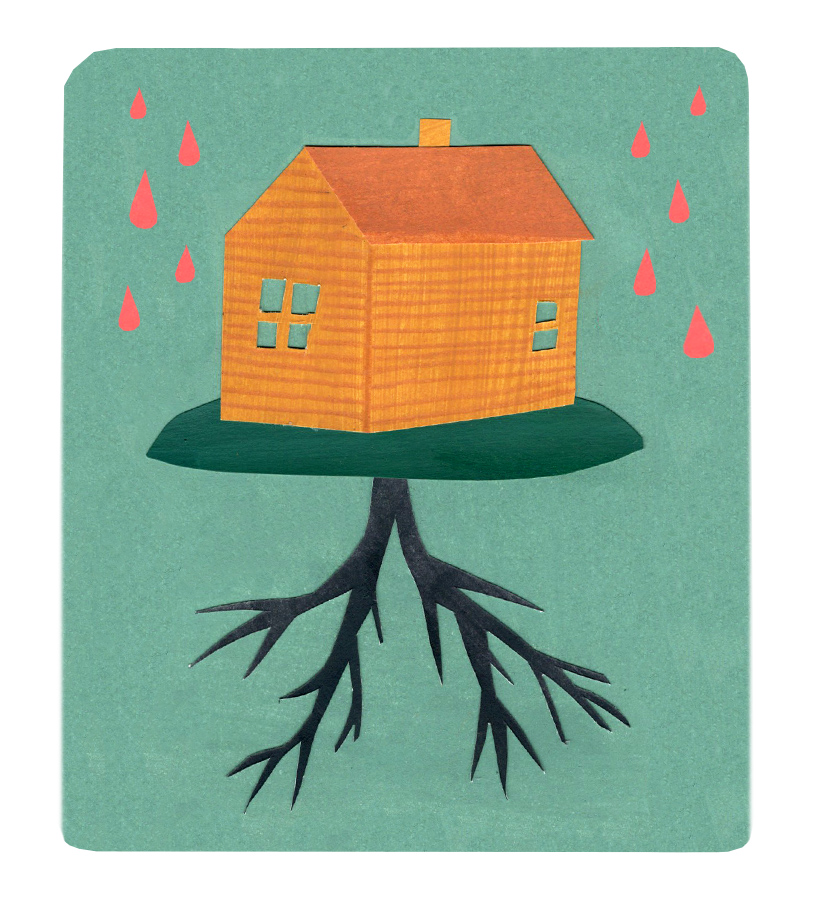
A friend visiting my childhood home once remarked, “There are so many bugs here, Emily.” I explained to her that it is safest to assume that everything you touch in the mountains is alive. Or was at some point. Or will be in the future. Which means that, in this place, there is always more to learn. Nothing here is ever just one thing. According to the United States Department of Agriculture Forest Service, “the Southern Appalachian Mountains and their characteristic plant communities are among the most varied in the United States.” The Highlands Biological Station at Western Carolina University calls it “one of the most biologically diverse regions in the temperate world.” An AP biology class at my high school once discovered a new species of salamander on a hiking trip entirely by accident.4
I often feel like an inadequate native of the region because I cannot name birds by song or identify flowers and trees on sight. I cannot tell you the name of those slugs covering my hands and arms. But, if everything in and of this place is bound in an endlessly complicated cycle of life, death, and decay, then I cannot be expected to intuit the name of every leaf or buzzing thing like a mythic mamaw in a rocking chair. Instead, just as I understand that I cannot fully know the place that will not let me leave, I have the responsibility to take heed. So long as I am attached to this place teeming with life, I am not permitted to remain stagnant. I am obliged to participate. To be fully alive.
I sat in a wood-paneled ballroom in New York City, chock full of perfectly seasoned bagels and fresh fruit trays. There was an open bar and the room was full of lawyers, business-types, doctors, and clergy, all alumni of a self-important ethics fellowship. I hold this diagnosis of collective arrogance in tension with the fact that I was surrounded by friends—people with vastly different careers than mine, headed toward vastly different income brackets, who I know are deeply good and smart and endlessly curious. The coordinators of the conference we were attending sat us down to watch Dark Waters, a 2019 film, starring Mark Ruffalo, that details the chemical company Dupont’s decades-long poisoning of Parkersburg, West Virginia. The movie checks nearly every box required by a piece of media intended to elicit sympathy and vicarious rage on behalf of an underdog community. There is a nobly ill and dying miner, his steadfast wife, a town full of scrawny white kids with bad teeth on bikes, and more Hollywood actors with bad Appalachian accents than you can shake a stick at. All that said, in a room full of professional types trying to make the world a little more habitable, the movie was a hit.
The discussion that followed with the wealthy, white lawyers featured in the film provoked appropriate outrage, horror, and curiosity from a group of people unfamiliar with chemical spills and the complicated legacy of coal. I did a quick search on my phone as discreetly as I could, pulling up some details of the 2014 Elk River chemical spill in Charleston, West Virginia, then handed my phone to a friend and invited him to skim it.
My friends at that conference were rightfully shocked by the story they watched, floored by the injustice and ignorance embedded in the systems it laid bare. While I was grateful for their righteous indignation, I encouraged them to realize that the story they had just watched was not unique. Its conclusion did not resolve the endless complexities and tensions that come with a region rich in resources and in histories of resistance and exploitation. (In hindsight, I should have told them to look up the Battle of Blair Mountain and let the conversation go from there.) And, even while I stumbled over an effort to encourage my friends to dig deeper, Jones’s question rang in my ears: What is a mountain man?
My people come from tobacco, not coal. We’re history teachers with a farming habit, not miners. Some of us have sat in corner offices and signed important papers and could have (and probably should have) wound up on the receiving end of some very legitimate collective action. While living in the mountains, we have done our best to be more than one thing—even if some of those things make me worried and ashamed. If the mountain’s peaks and valleys are buzzing with an abundance of species, that inevitably means that some of that life will seek the demise of its neighbors. Appalachia encompasses the people in Parkersburg who knew Teflon was deadly. It includes coal executives who skip tank inspections, and it cannot ignore Klansmen and the communities who protect them.
The challenge is to find what lessons we might take from the creativity inherent in a temperate rain forest. To proceed with caution after witnessing the violence such a place can render unto itself. To imagine something more and live in such a way that celebrates and interrogates what that “more” might mean. In a season of national upheaval and reckoning—in a place made mythically white and demonstrably bursting with life that defies such a myth—this interrogation is unavoidably responsible. Because without that inquiry, the place becomes the opposite of what it was created to be: life gets squelched by stagnancy. And with that comes the slow, agonizing death of reductive histories and presumed homogeneity.
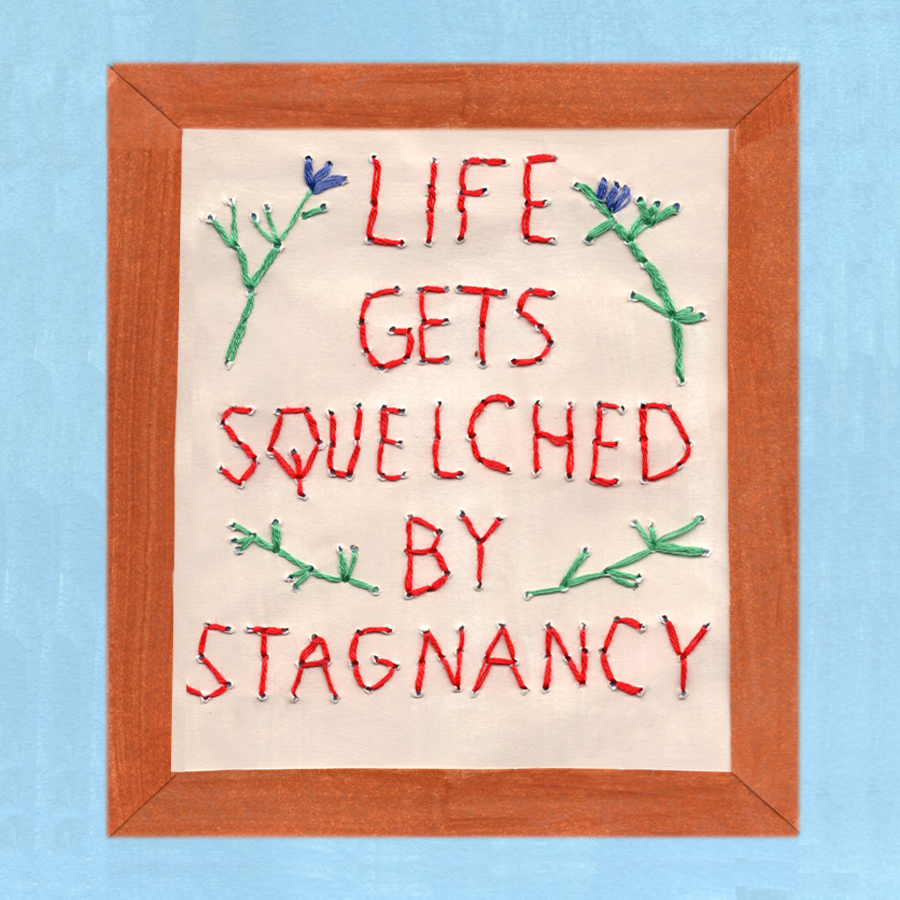
Wendell Berry argues that writers pay attention to the regions to which they belong “because of a correct perception that attention is owed.” He warns that “without our attention and our attending, our subjects, including ourselves, are endangered.” We owe the places we belong our attention—and our active, evolving, reflective attending. The test of that attention, the purity of its aims and the effectiveness of its tactics, Berry suggests, is “the test of imagination,” which bears out not in “the territory of art or the territory of the mind, but the territory underfoot.” The array of life that our places support and encourage is a direct reflection on our ability to attend to them, to ourselves, and to one another. The narrower our attention becomes—the smaller our dreams and the more limited our hopes—the less life in our places and the nearer to death we draw.5
For Berry, this attending is an “action [that] implies place and community,” and while thoughts might remain disembodied, according to Berry, there is no such thing as “disembodied action.” It “requires local and communal reference,” the learning of the names of genus and species, families and towns, rivers and reservations. To act, for Berry, “is to live . . . and one does not live alone.”6
This lived experience must, according to Berry (as well as my innate impulse to find my way back to that creek), also be linked to place. The ground on which we do conscientizing, theorizing work is a central character in a creative spiral of reflection, deconstruction, and liberation. The dirt is what is going to catch us when the myths we’ve created about ourselves and our places inevitably fall apart.
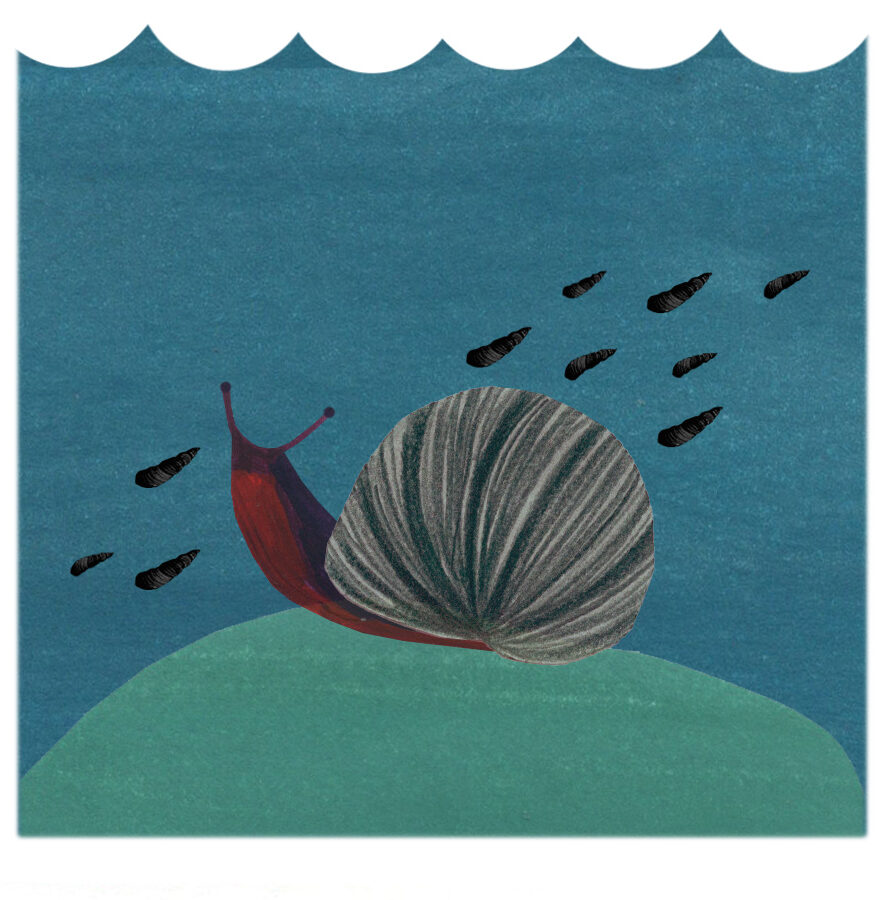
In that same essay on writers and their regions, Berry—a white man from central Kentucky—owns up to the baggage and brutality that connection to place contains for white people. White people’s connection to their place does not grant them the privilege of distancing their present practice from the history of their ancestors’ theory, what Berry calls “the Territory of historical self-righteousness”:7
. . . if we had lived south of the Ohio in 1830, we would not have owned slaves; if we had lived on the frontier, we would have killed no Indians, violated no treaties, stolen no land. The probability is overwhelming that if we had belonged to the generations we deplore, we too would have behaved deplorably. The probability is overwhelming that we belong to a generation that will be found by its successors to have behaved deplorably. Not to know that is, again, to be in error and to neglect essential work, and some of this work, as before, is work of the imagination. How can we imagine our situation or our history if we think we are superior to it?8
The work of liberation is the knowing—the awful shattering into hope that is the work of active imagining and sustained efforts at collective recovery. It is not my place to say how deplorably your ancestors might have behaved or the extent to which another person’s hate might have marked your family forever. In the mountains, those lines wind hazy and long. Still, Berry’s warning still holds true: even and especially in moments of reckoning, we are not to put ourselves above the history contained in the ground on which we stand. For the sake of liberation, we are to plant our feet firmly and pull together the strands of our theory and practice, living as though all the plate glass blocking the breeze has already been shattered.
My dad replanted the garden. Attempting to correct our own slight against this place, however minor, he went out before it got too hot and shoved seeds back into the dirt. (He gave up on the corn. The deer would just get it anyway.) It’s an effort to let the territory under our feet—the territory that held up my grandmother and her grandmother before her—keep our attention when it grabs us. We owe it that much, at least. When attention is paid, the spiral of recovery between our theory and practice in and of a place becomes more than anticipating the weather and keeping a chainsaw out of the creek water. Attention reveals and sets free the presence of myriad theories and a plethora of practices.
A region hosting and holding more life than science understands cannot pursue liberation for that life in a straight or uniform line. And while the destruction will come, in late frosts and fallen poplars, in the insecurity of old hates and the fears that give rise to new ones, full participation in the life of the place will not permit destruction merely for destruction’s sake. The snuffing out of life in an ecosystem dependent upon diversity clears an easy path to exploitation and to entrenched myths about who belongs on that land and what growth and development really mean there.
Liberation, based in action, emerges as the antidote. Liberation that acts as a rock, cracking the glass between passive theoretical observation and active practice. Liberation that does not grant the luxury of forgetting one’s very particular place in history because that place functions as a reminder that, so long as this dirt is under our fingernails, we are unavoidably apart of it. Liberation that issues a blank check of attention to pay to the place to which one is beholden. Liberation to embody thought alongside one’s neighbors in an ever-expanding spiral of grace.
This new way of being does not require an uncomplicated knowledge of one’s place or an innate understanding of the most sympathetic ways of speaking and being. It does, however, mean that to ignore the place and the liberative work it requires is to remove oneself—violently and tragically—from the story of it, to invite that death-dealing stagnancy into otherwise abundant life. I cannot name the intricacies of this process for each place, but if you find yourself in the woods in the mountains, I recommend finding a creek and plunging your hands under the water, as far up your arms as you can stand. Let the cold shock you and seep into your bones. Search for the slime of slick rocks and hairy moss. Lift up your hands and see what sort of new life clings to your buzzing fingertips. Then set it free.
Emily is a PhD student in the History Department at West Virginia University and also received a Master’s in Divinity and a Master’s in Arts from Columbia Theological Seminary. Her work is centered on religious history, especially in the rural mountain south. NOTES
1. Ronald D. Eller, Uneven Ground: Appalachia Since 1945 (Lexington: The University of Kentucky Press, 2008), 5.
2. Eller, 8; Eller, 8.
3. Jeremy B. Jones, “Notes on a Mountain Man,” in Appalachian Reckoning: A Region Responds to ‘Hillbilly Elegy,’ ed. Anthony Harkins and Meredith McCarroll (Morgantown: West Virginia University Press, 2019), 271.
4. Steve A. Simon, Thomas K. Collins, Gary L. Kauffman, W. Henry McNab, and Christopher J. Ulrey, “Ecological Zones in the Southern Appalachians: First Approximation,” United States Department of Agriculture Forest Service Research Paper SRS-41, Southern Research Station (Dec. 2005): https://www.srs.fs.usda.gov/pubs/rp/rp_srs041.pdf; Charlotte Muir, “Biodiversity of the Southern Appalachians,” The Highlands Biological Station, Western Carolina University, https://highlandsbiological.org/biodiversity-of-the-southern-appalachians/.
5. Wendell Berry, “Writer and Region” in What are People For? (Berkeley: Counterpoint, 1990), 83; Berry, 83–84.
6. Wendell Berry, 85; Berry, 85; Berry, 85.
7. Berry, “Writer and Region,” 81.
8. Berry, 81.

